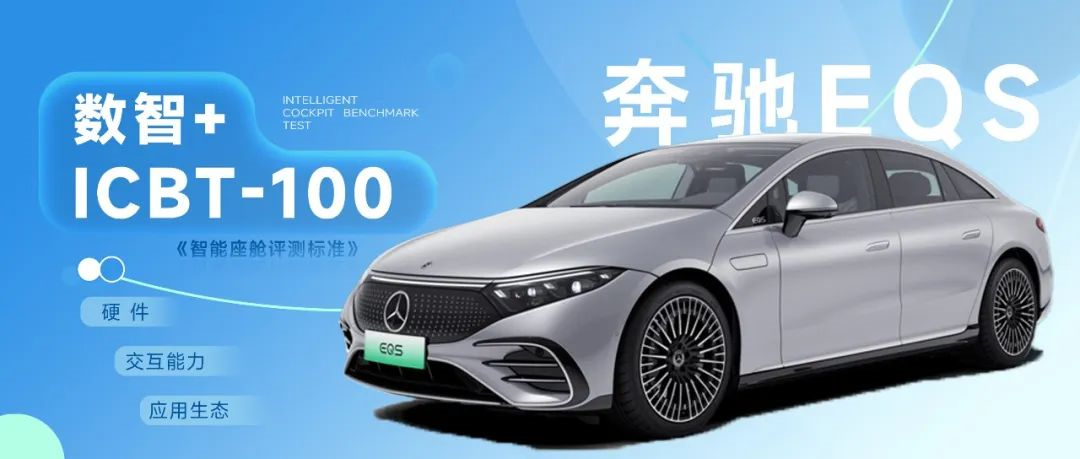Author: Xiong Ruifeng
Next decade flagship!
“If you had 1.5 million, would you buy an electric car?”
To be honest, as a senior automotive editor, I haven’t thought about it (mainly because my wallet is empty!)
But it wasn’t until Mercedes-Benz, a century-old brand, released its flagship all-electric sedan, the EQS, that I realized electric cars could be sold at this price.
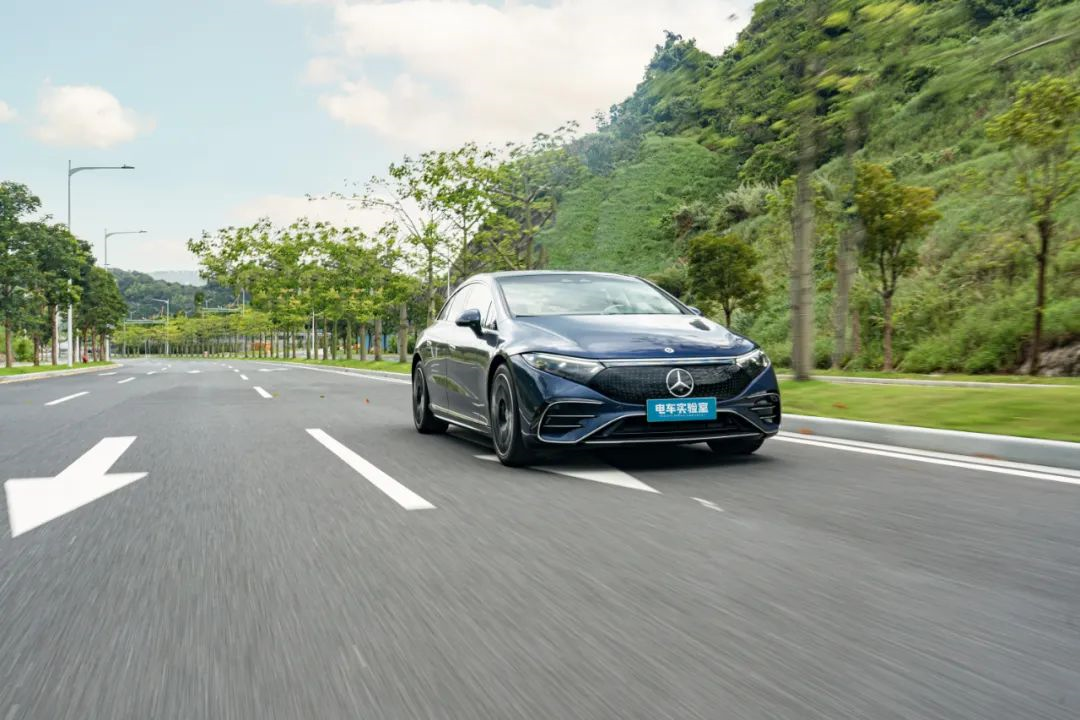
And the model that came to our Intelligent Cockpit Testing Center this issue is the Mercedes EQS. Let’s take a look at what skills this intelligent cockpit has.
At the beginning
Nowadays, the intelligent cockpit has developed to the point where it is no longer simply satisfying functional requirements. Traditional passive interaction (initiated by humans) is moving towards active interaction (machines can initiate it based on user needs), and more natural and emotional functions are quietly changing our driving habits.
To this end, we have launched the “Numerical Intelligence + ICBT-100 Intelligent Cockpit Evaluation Standard”, focusing on three major categories: intelligent hardware, interactive capabilities, and application ecology for scoring.
Hardware
It has to be said that Mercedes-Benz has once again played with the interior decoration, and if you think the set on the new S-Class is stunning enough, then the EQS will certainly refresh your perception of the interior decoration. The perfect combination of technology, luxury, and art.

The whole center console is perfectly connected by a curved glass, extending from the left A-pillar to the right A-pillar (length of 141cm, experience area of 2432.11 square centimeters). In addition to the super-large size, it seamlessly integrates the previously separated layout of 12.3 inches LCD instrument panel, 17.7 inches central control screen, 12.3 inches passenger entertainment screen, air conditioning vents, achieving an unprecedented design aesthetic.
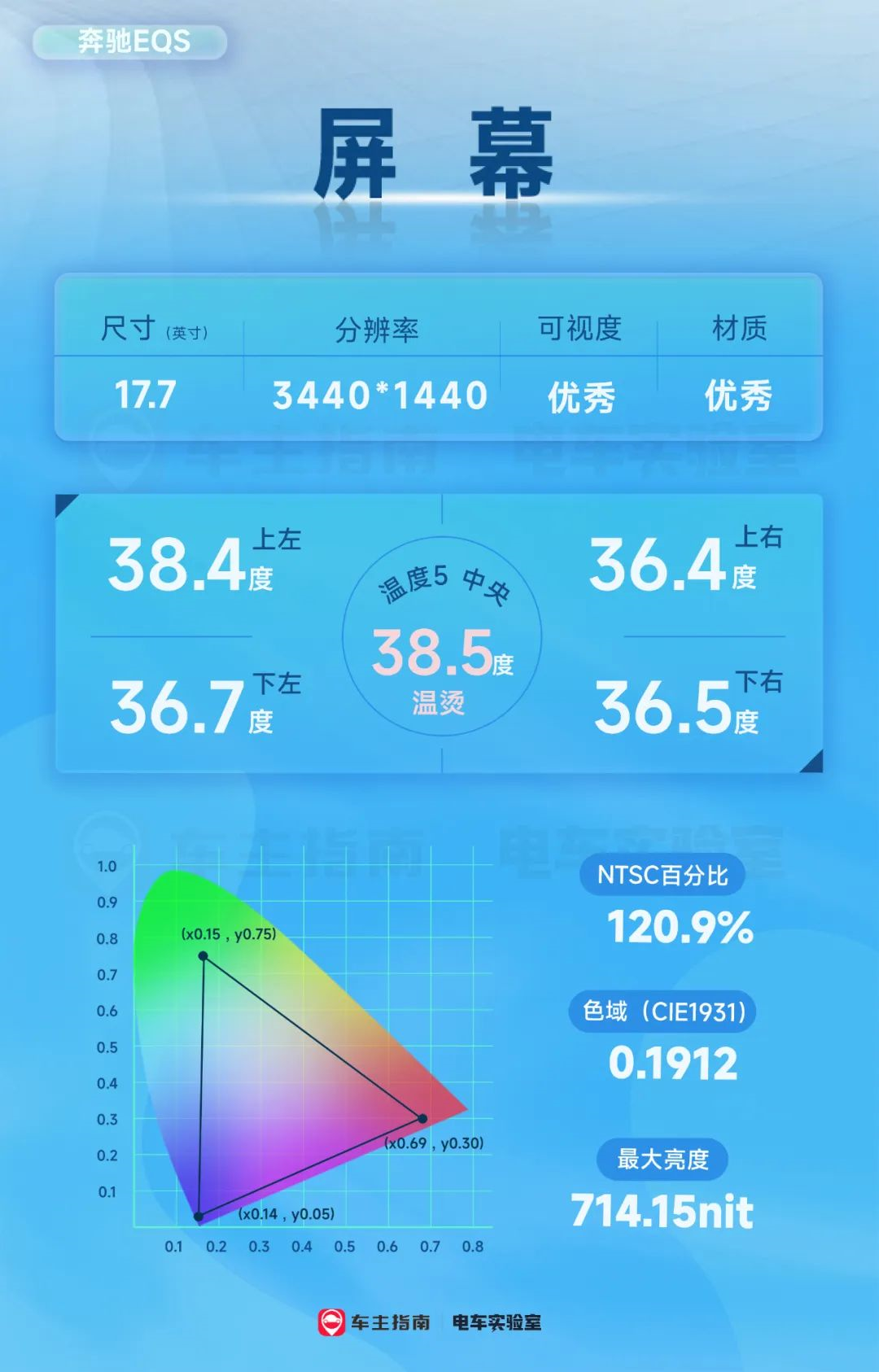
On the screen hardware part, Mercedes-Benz EQS successfully tells us what the hardware ceiling of an intelligent cockpit is.
For the central control screen alone, Mercedes-Benz has joined forces with Samsung to exclusively customize this 17.7-inch OLED curved screen, with a resolution reaching 3K level (measured PPI 201), and the actual display effect is very stunning.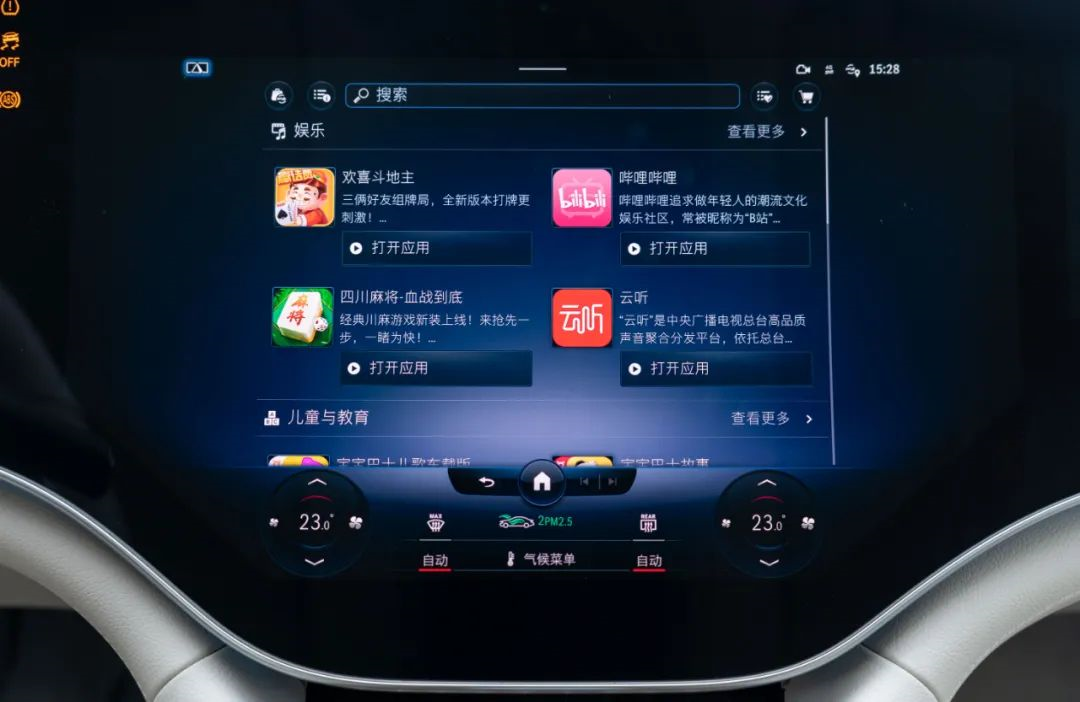
Moreover, the color reproduction rate of the screen is directly “godly” for Mercedes-Benz EQS, taking the championship with a tested NTCS color gamut of peaking 120.9%. It is worth noting that the color gamut of our general laptop screen is only around 72%, while the second place, the Ideal L9, only reaches 94%. The disparity between them is far from insignificant.
Additionally, the peak screen brightness has reached 714.15nit, and with the OLED’s self-luminous technology, the screen can present an absolute black of 0nit. Regardless of any angle or lighting condition, such a top-notch screen quality can ensure high color brightness and high contrast values.
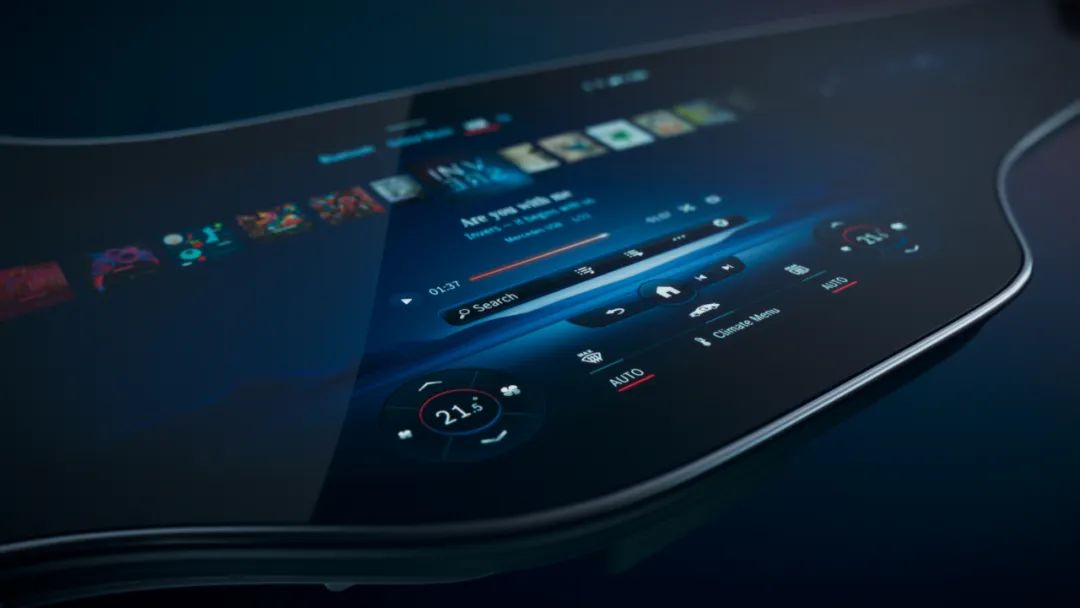
At the same time, benefiting from the aluminum silicate material of the curved glass, the screen’s anti-light ability and visual angle have reached a top level. However, although the official claims that the screen surface uses a three-layer coating process, its ability to isolate fingerprints is only moderate.
Furthermore, there are twelve touch actuators located at the bottom of the screen, which are used for tactile feedback during operation. If the user touches certain points there, they will trigger the vibration module on the cover.
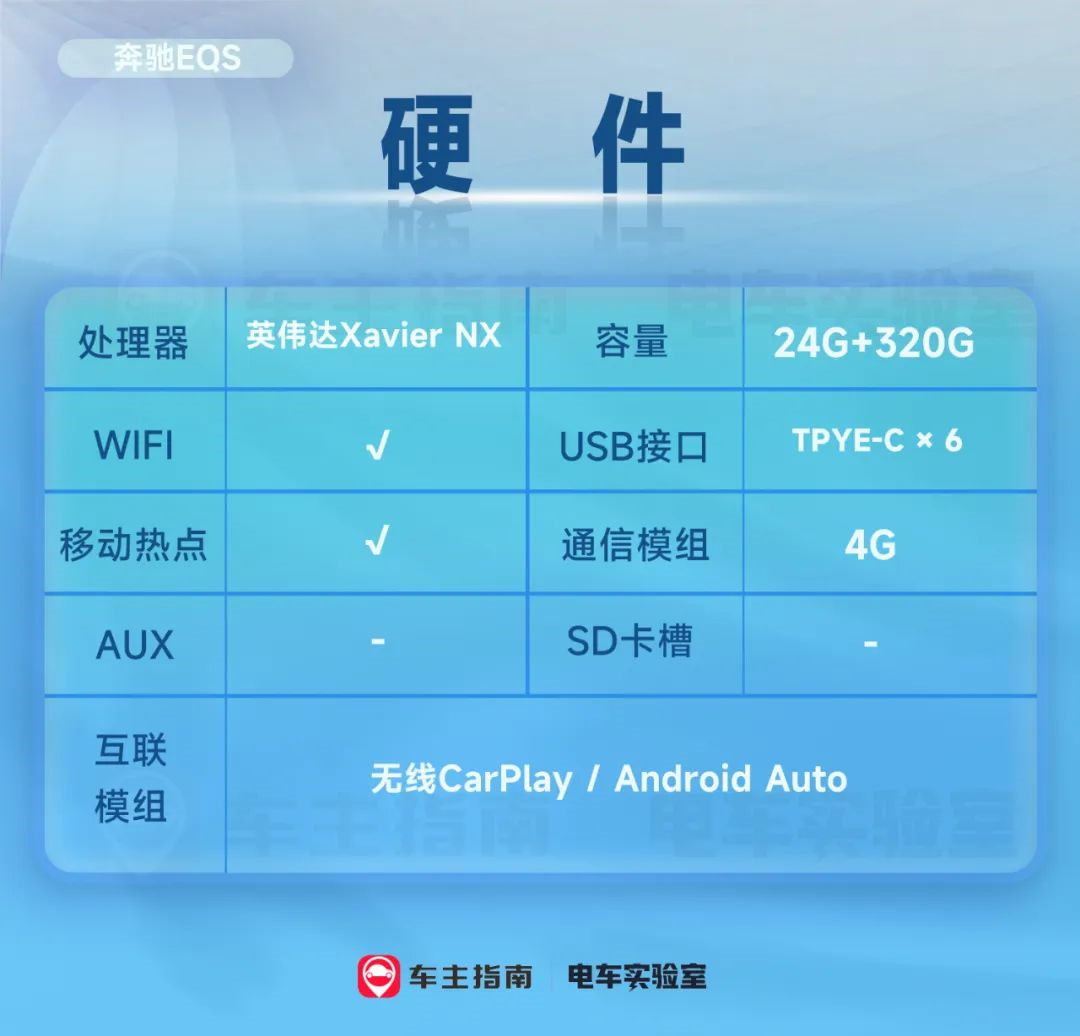
Since EQS has such a powerful screen, the processor should not be underestimated either. It is equipped with NVIDIA’s latest generation of Xavier NX chipset (8-core CPU), and its overall performance is second only to the current mainstream flagship chip Qualcomm Snapdragon 8155.
In addition to the high-performance chip, the memory space of EQS is also considerable. Like the recently tested Ideal L9, EQS has 24GB of RAM (keep in mind that the current mainstream smartphones only have about 8GB), and the storage space also reaches 320GB (SSD).
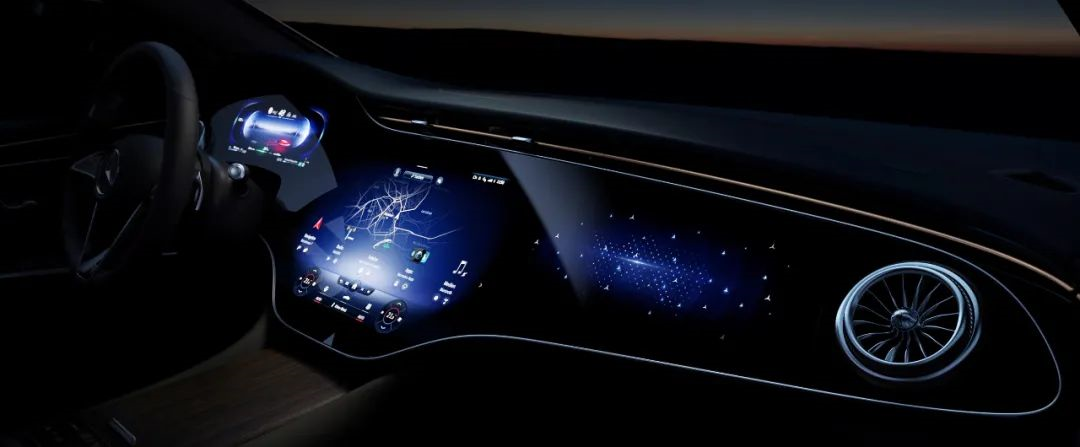
For the first time, there is an added passenger entertainment screen, which can provide passengers with their own operational area and make the journey more enjoyable and fun. Moreover, if there is no passenger in the co-driver’s seat, the entertainment screen will become a digital decoration, mainly displaying standby animations or the Mercedes-Benz logo.## Translation
The front row USB ports seem too “advanced” as they offer six TYPE-C interfaces, but not even one TYPE-A (what a pity!). The connectivity module supports wireless Apple Carplay, Android Auto, etc.
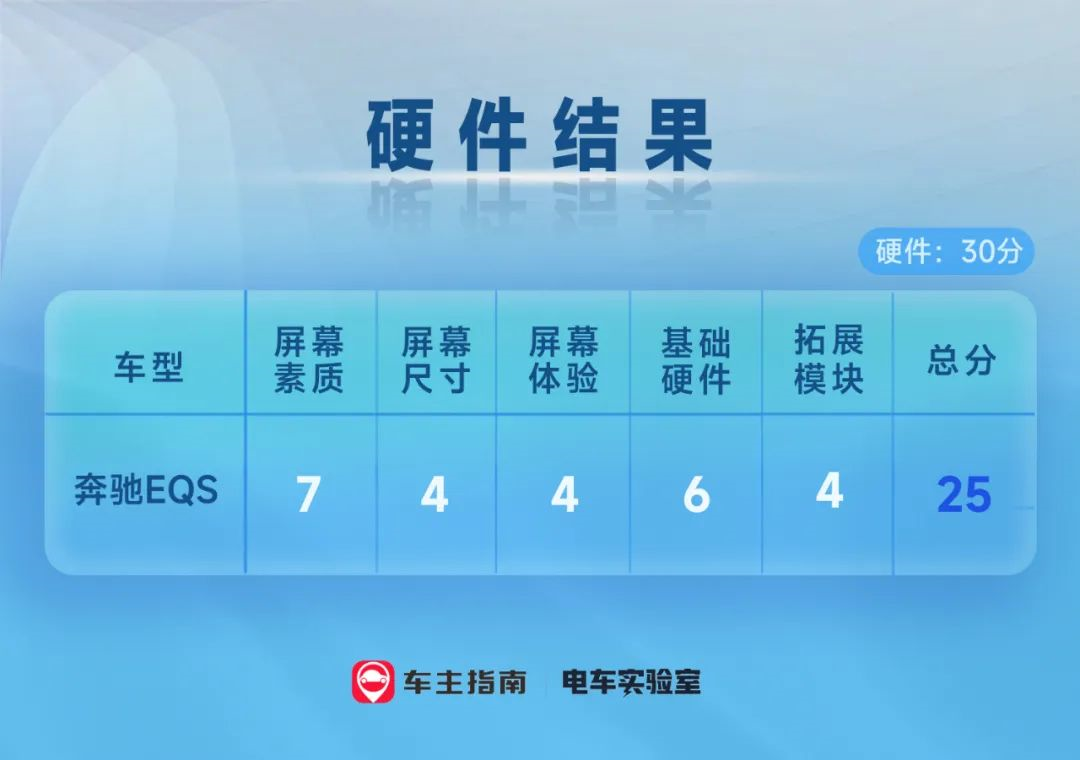
Interaction Section
In the IT world, there is a saying, “No matter how good the hardware is, it will be useless without system optimization”, which reflects the importance of the system. In the smart cabin test, the interaction ability occupies a large part, and in this section, we divide it into three dimensions: system, voice, and others.
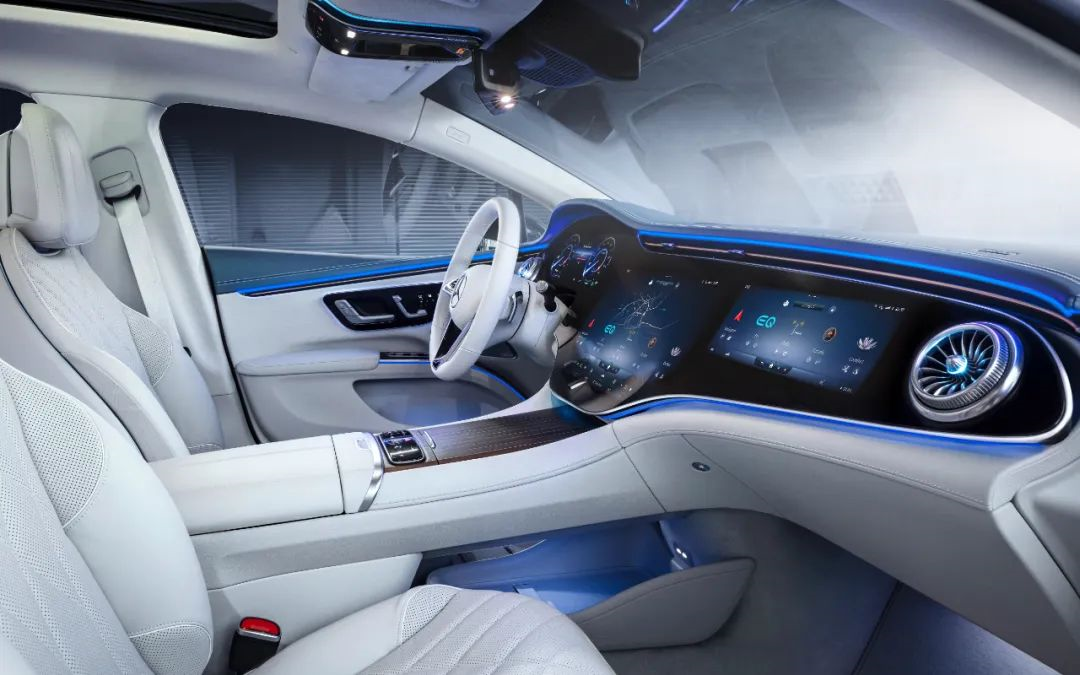
Unlike the new S-Class, the Mercedes-Benz EQS is equipped with the new generation MBUX Hyperscreen car system, which has gorgeous interface and rich transition animations, making me want to say “luxury”. At the same time, the entire UI has abandoned the popular flat card-style layout and adopted the quasi-physical style. The main interface consists of a map display and a fixed air conditioning module below, with HOME and Return keys.
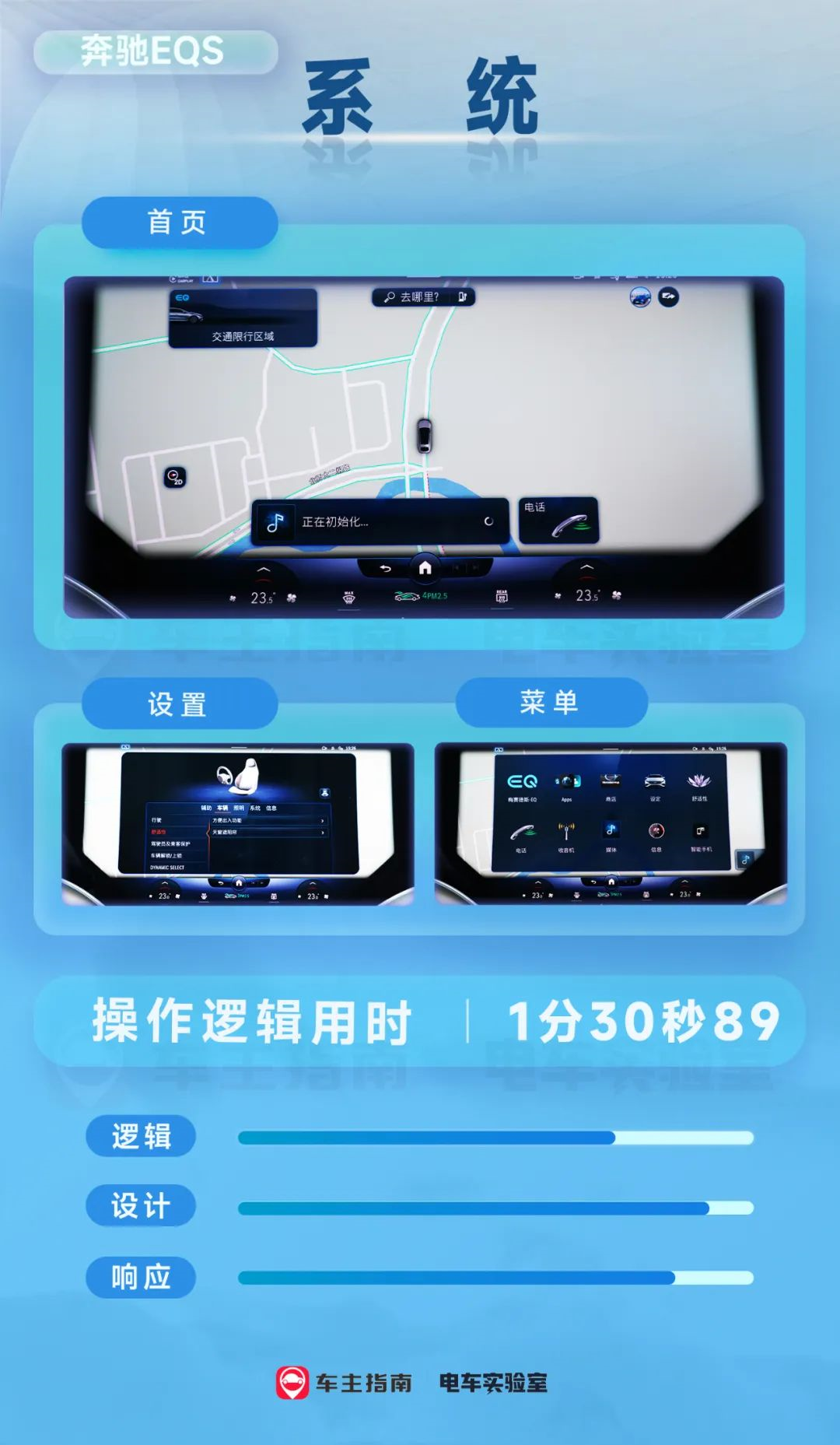
In terms of menu hierarchy, there are three levels of pages, and you must click the HOME key to enter the secondary menu page and then find the corresponding function (but to be honest, only using a small HOME key on the big screen for switching poses significant challenges for blind operation).
After entering the settings, the list layout is combined with real-time elements to present each function concisely. I have to say that Mercedes-Benz is really good at “aesthetics” design, and how can you refuse such a gorgeous interface?
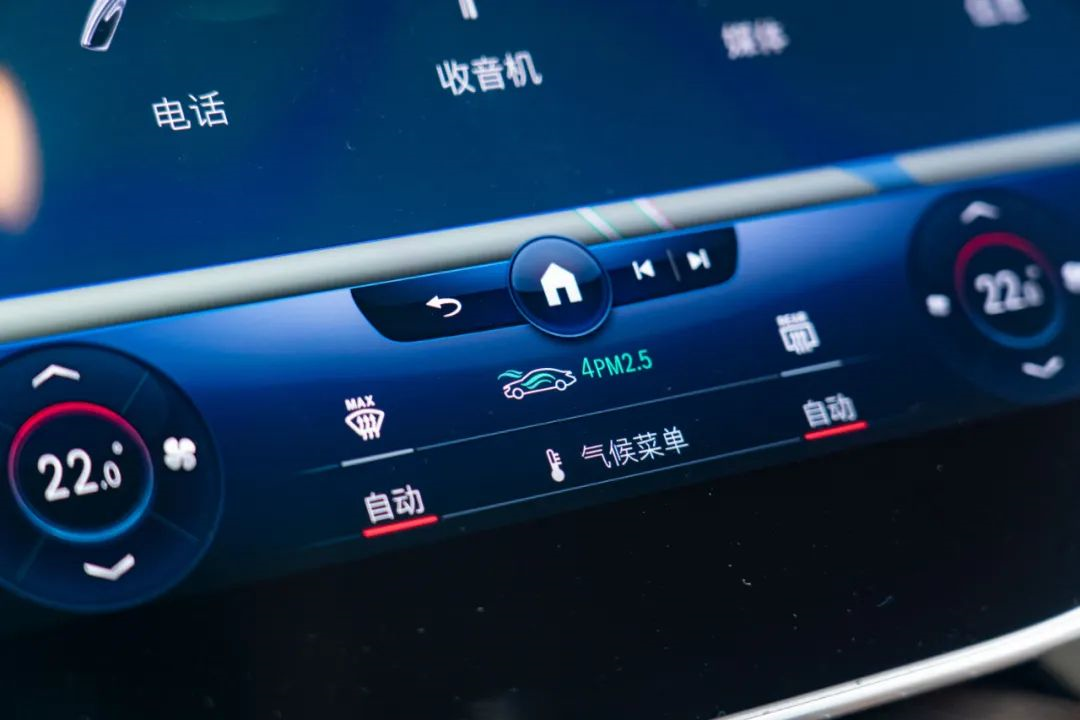
In terms of system fluency, thanks to the fast system response speed, the logic test time of the Mercedes-Benz EQS is only 1 minute 30 seconds and 89 milliseconds, which is excellent among all tested models.
Test Description: Within the specified time, let the user who is experiencing it for the first time open each function in turn according to the process: match your mobile phone’s Bluetooth -> play Bluetooth music (start playing) -> dial the 10086 phone number (connected) -> adjust the screen brightness of the car machine (adjust to the brightest) -> set the navigation destination and see who uses the shortest time in the end.
If you think the interaction of the system is not detailed enough, it actually means that you haven’t experienced it long enough.
It pioneers the AI page optimization function, which can actively display the correct functions for users in the center of the screen, and predict in advance which functions the user will use next, making optimization or display (this AI function is based on NPU technology).
In addition, the system can also learn the user’s habits to automatically arrange the layout of the functions on the homepage; for example, most users will open navigation, broadcast/media, and phone when using the car system, so the homepage will always be centered around navigation programs.
- Here are four examples of AI:
1. If you always call a friend on Tuesday nights on your way home, the system will actively remind you to call your friend at a specific time on Tuesday night. However, if someone else is driving the EQS on Tuesday night, the system will not make this suggestion.
2. If the EQS driver uses the seat heating/massage function in winter, the system will learn and automatically suggest to turn on these comfortable functions in cold temperatures.
3. If the user regularly turns on the steering wheel and seat heating device, the system will suggest the appropriate heating gear when the seat heating device is pressed.
4. If the car often increases the ground clearance at a certain location (such as a steep garage entrance), the system will record this based on GPS information, and the car system will automatically raise the chassis when approaching the location in the future.
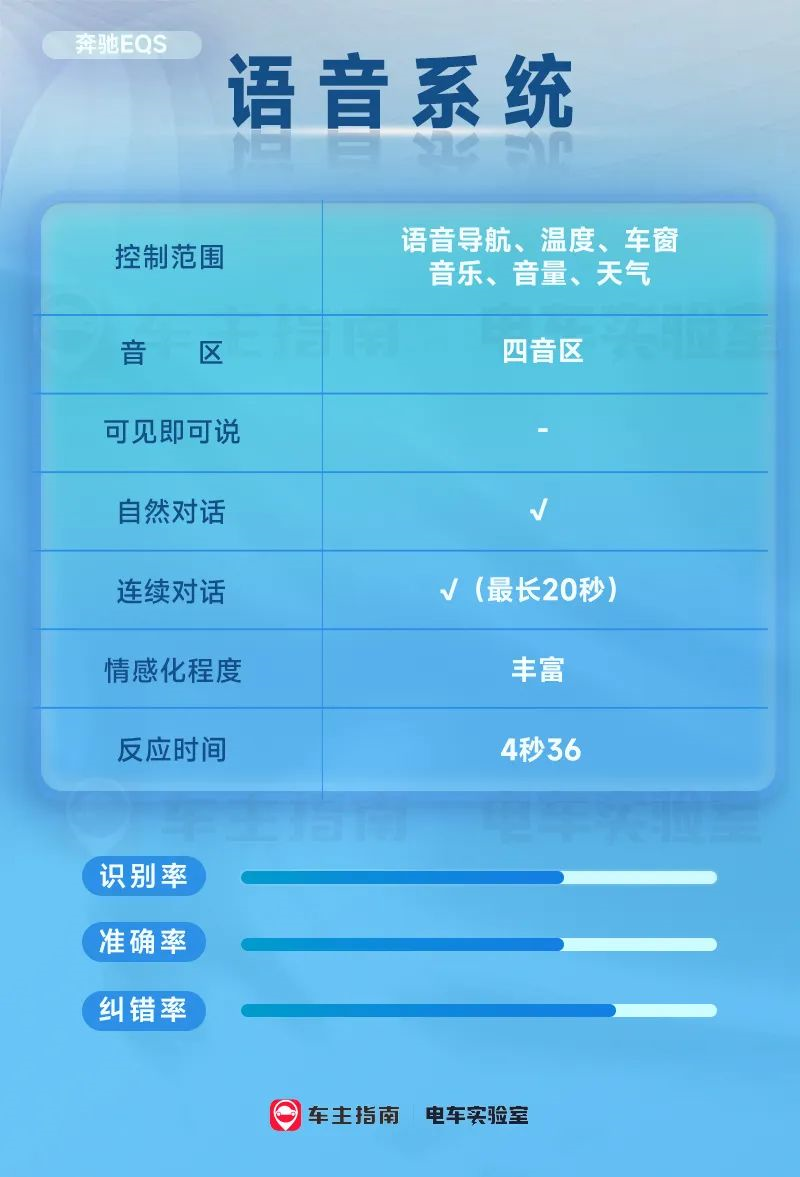
For the voice system, Mercedes-Benz EQS is equipped with the self-developed MBUX voice assistant system, which supports default wake-up words (“Hello, Mercedes”) or wake-up with steering wheel buttons.
At the same time, the Mercedes-Benz EQS is also equipped with 4 array microphones, which enables voice recognition at the seat level for all four seats, making it easy to identify the seat area where the voice command is issued, so that each passenger in the car can control the vehicle functions (air conditioning, seats, power windows) point-to-point.
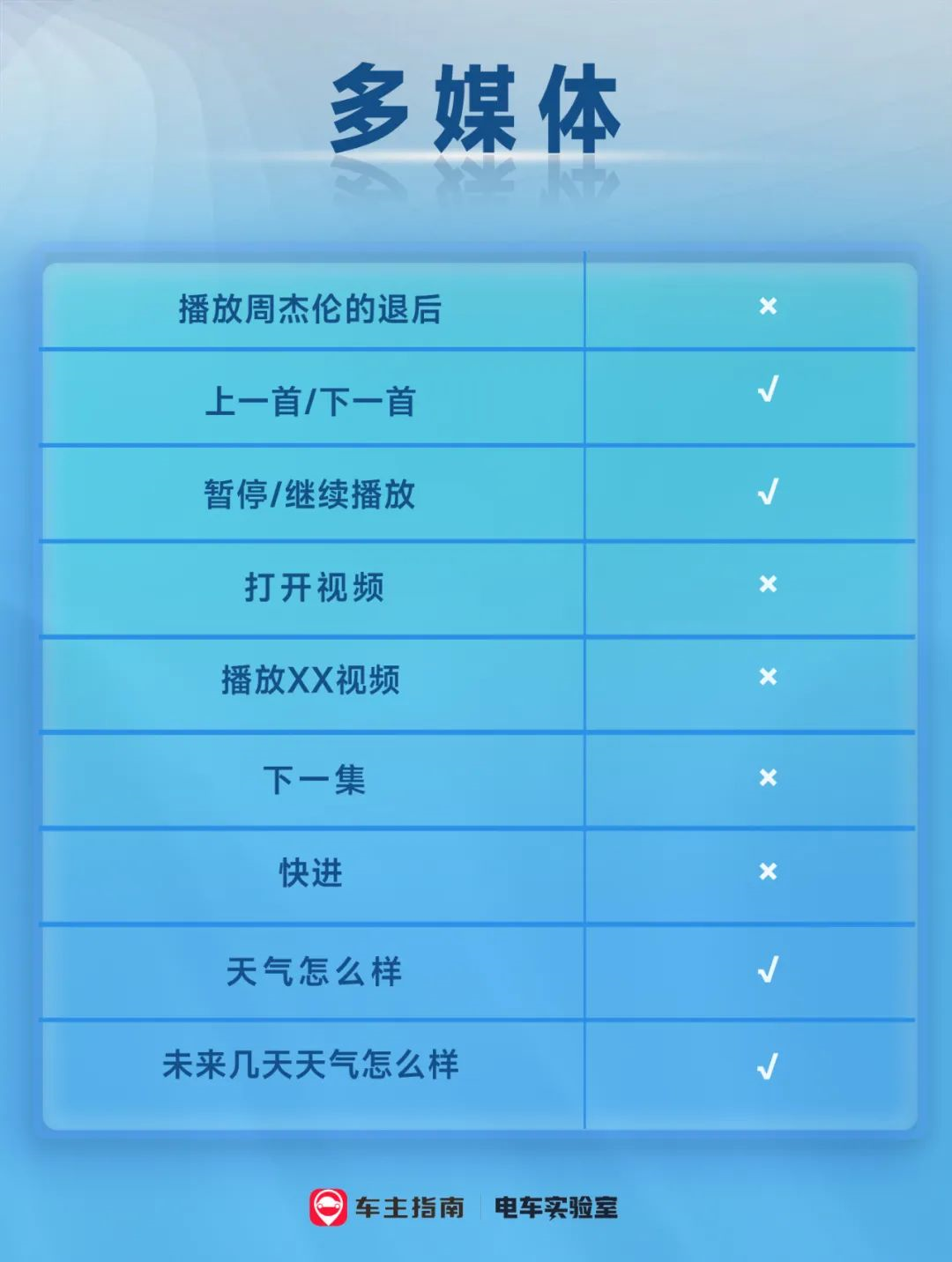
In actual multimedia voice tests, Mercedes-Benz EQS has no problem with simple song switching or pausing, but it is a bit unexpected that it cannot achieve searching for a specific song. Video playback is also not supported, let alone for third-party video applications.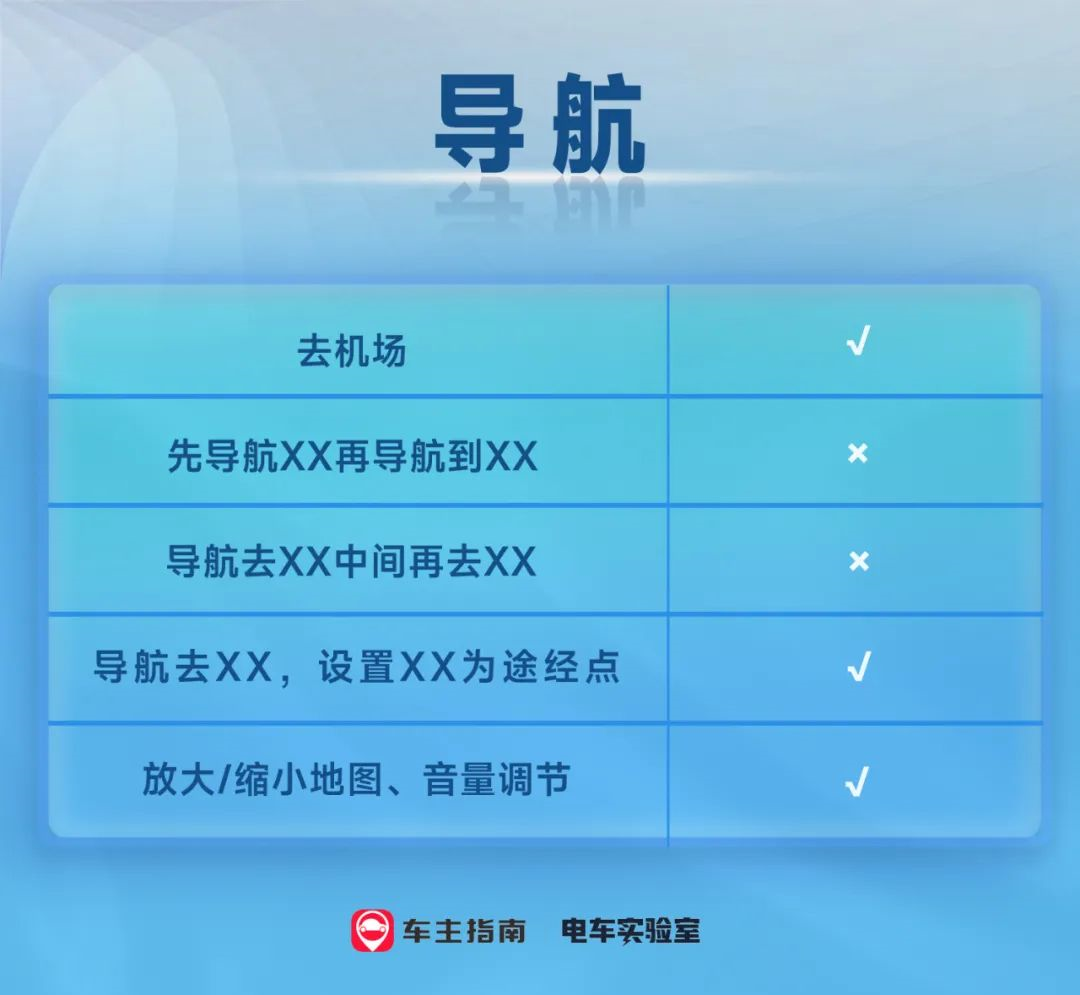
In terms of voice-controlled navigation, while the Mercedes EQS can perform simple tasks such as navigating to a single destination, zooming in and out, and adjusting the navigation volume, it seems to struggle with recognizing mid-way points. It looks like such understanding will need to be addressed in future updates.
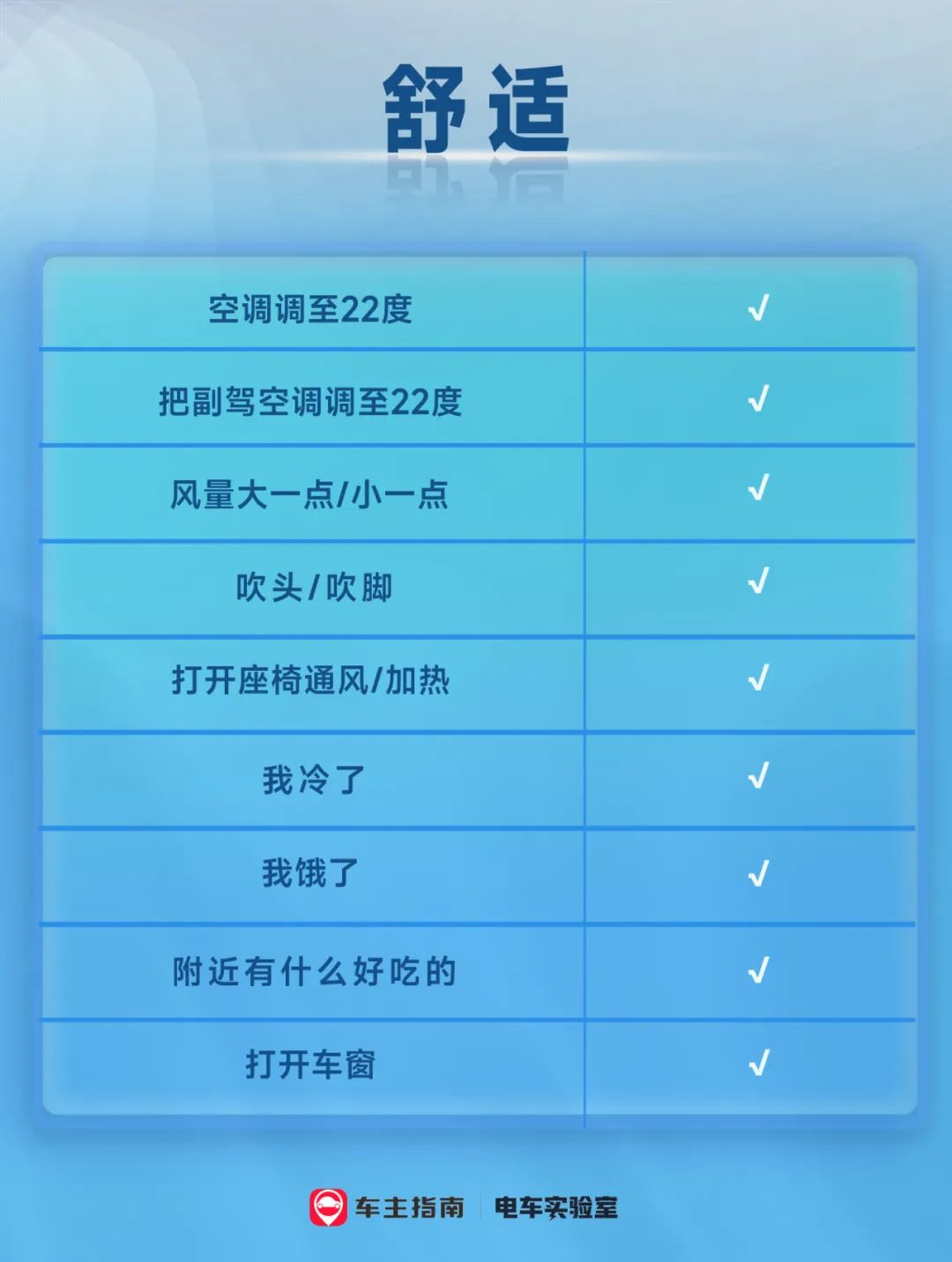
Regarding comfort settings, the Mercedes EQS can easily execute basic functionalities such as turning on the air conditioning, adjusting the temperature and air-flow, and controlling windshield ventilation. Moreover, it can also understand expressions such as “I’m cold/hot” quite accurately.
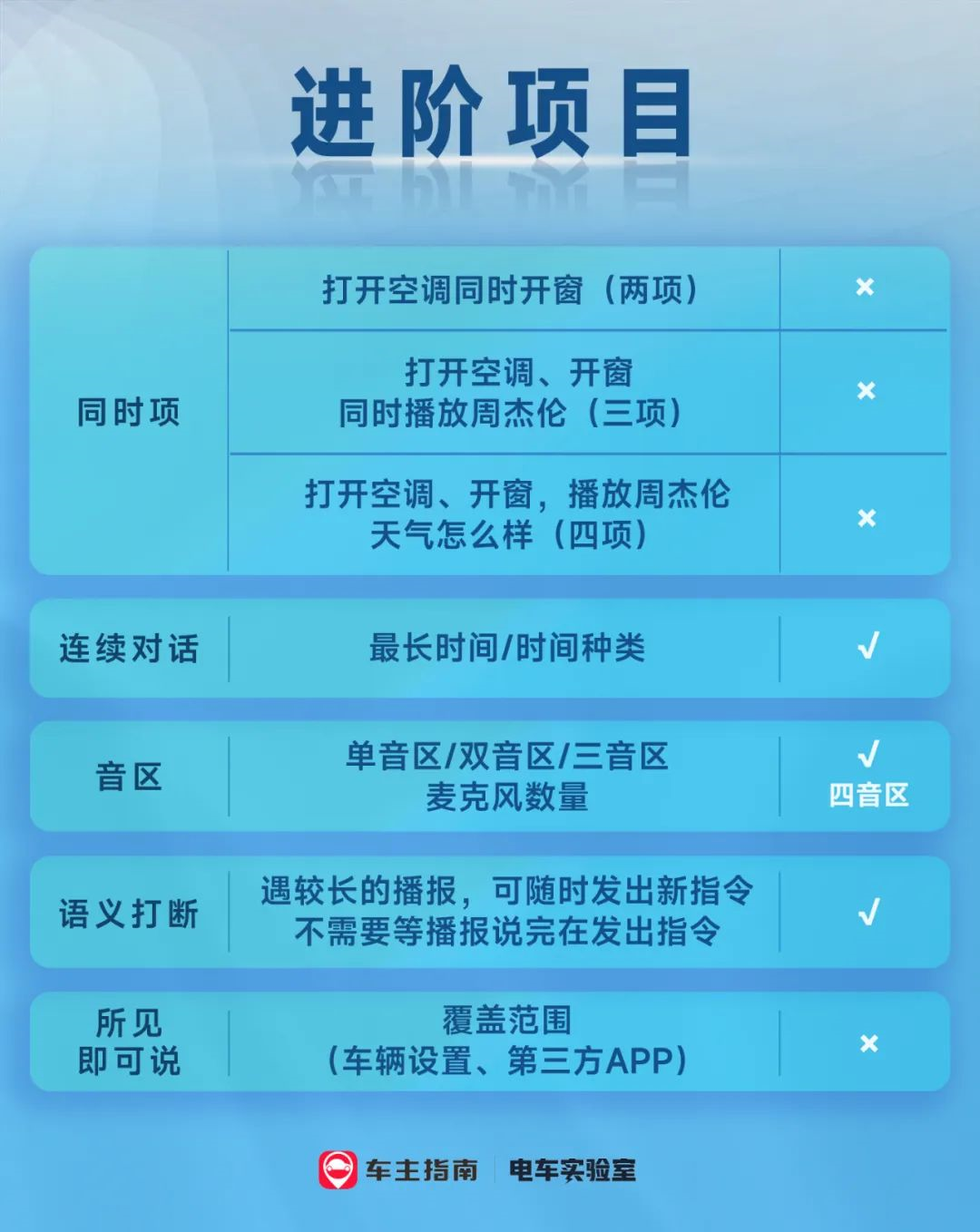
In addition, the advanced features of the current version of the Mercedes EQS include three items: continuous conversation recognition, semantic interruption, and wake-word free support. Among them, continuous conversation recognition can identify commands for up to 20 seconds without the need for wake words, and semantic interruptions can issue new commands at any time during longer broadcasts without waiting for the previous command to complete, and the system will automatically play the new command after it is issued. Wake-word free support currently offers 25 functions that cover a wide range of common items, which is quite satisfactory. However, the Mercedes EQS does not support simultaneous multi-voice tasks, and can only complete them one by one in order.
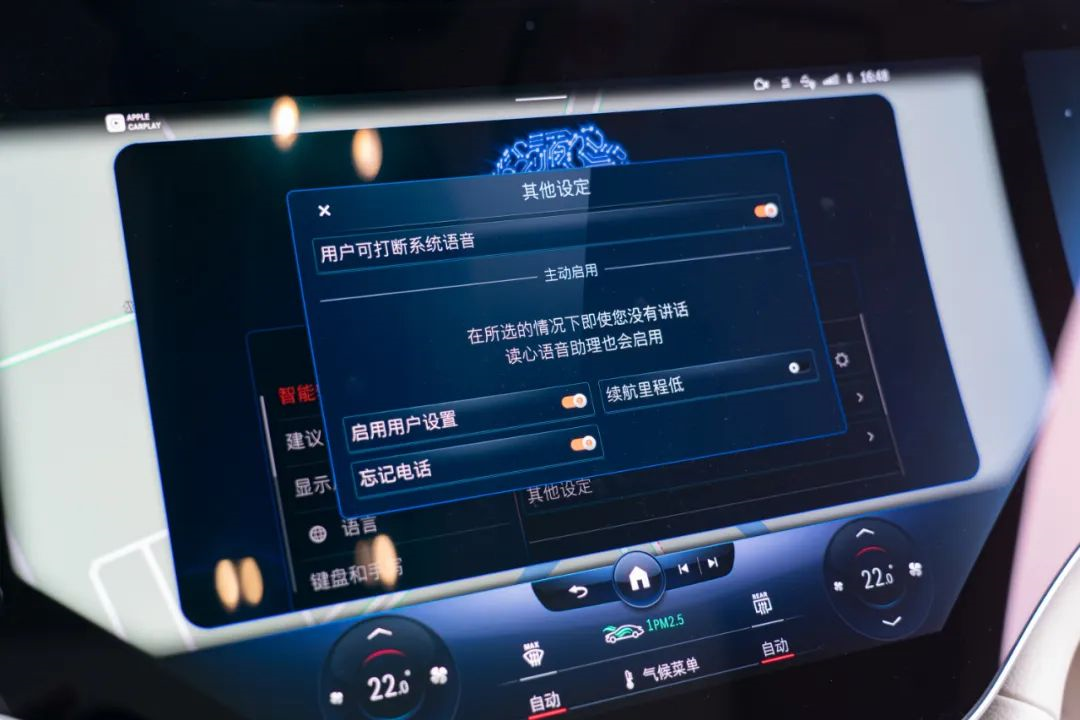
It is worth mentioning that, as a global model, the Mercedes EQS surprisingly supports 27 languages with natural language understanding (NLU), including Mandarin, Cantonese, and Sichuanese. In addition, the voice assistant can recognize passenger identities through their voices. Once the various features of the voice are understood, they can be used to activate profile configurations so that users can access personal data and functions.
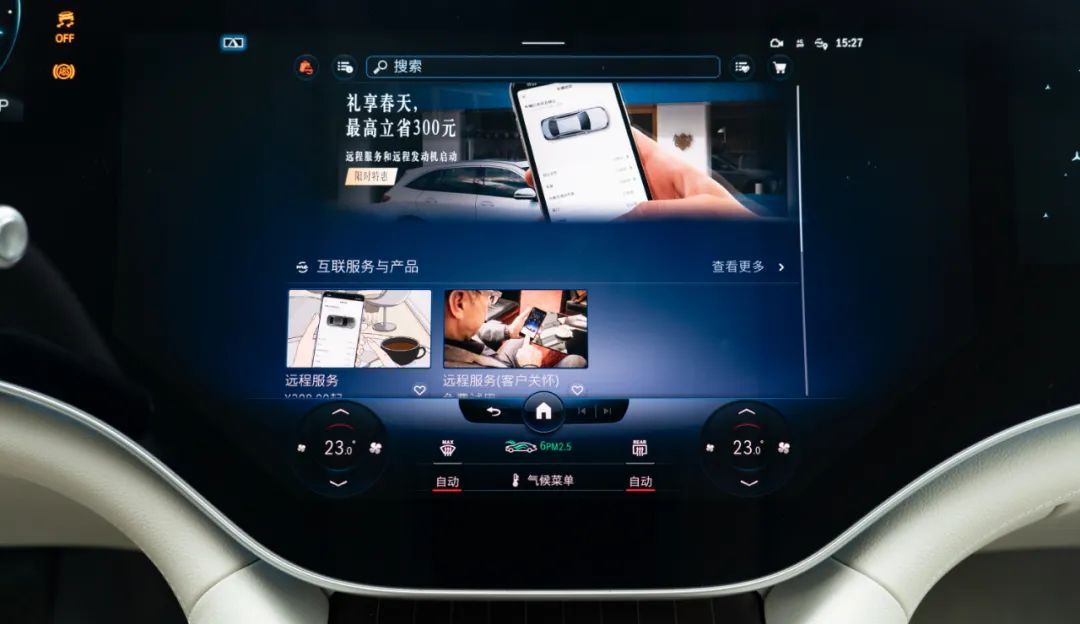
Regarding remote functionality, while the Mercedes EQS can be connected to a smartphone via the official “Mercedes me” app for interconnection, the functionalities that can be realized are limited to remote unlocking, opening of windows/doors, intelligent location, geofences, valet parking, etc. As for the previously mentioned automatic parking function from the overseas launch meeting, it is not currently available in China.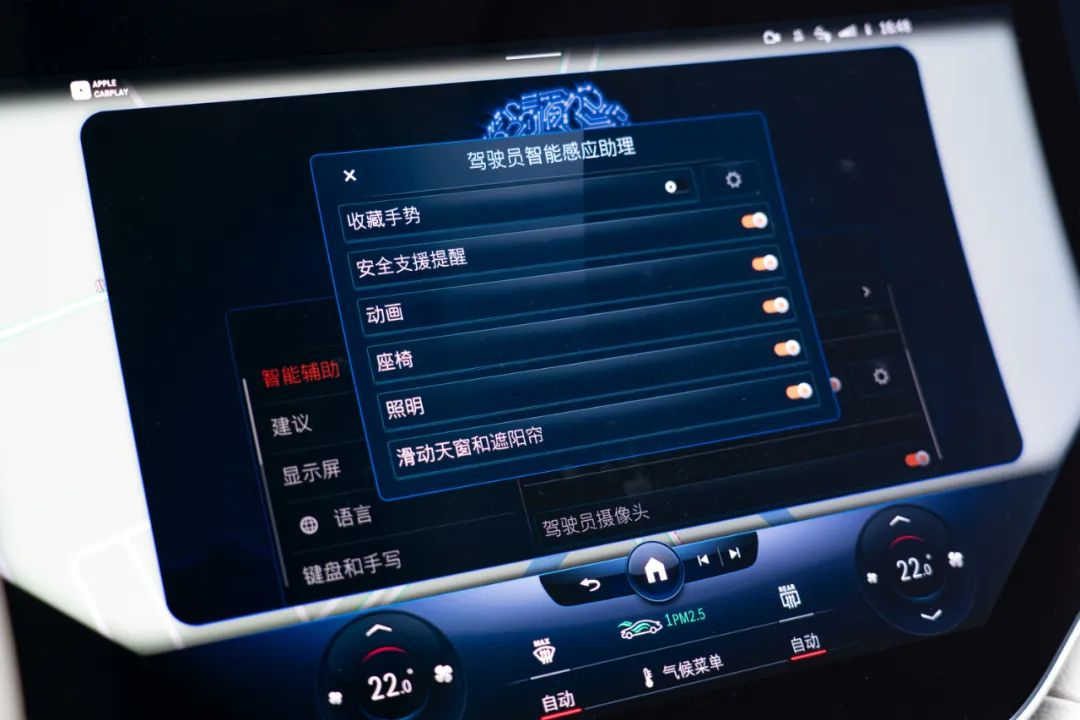
In addition, the Mercedes-Benz EQS also integrates the MBUX Interior Assist (Gesture Control System), which can monitor the head, hands and upper body movements of the driver and front passengers through two laser cameras installed on the roof, and directly convert the image data into metadata for processing and conversion into corresponding vehicle functions.
For example, lifting your hand and waving it back can open the sunroof; looking back will automatically open the rear sunshade; briefly moving your hand below the center rearview mirror will turn the reading light on or off, etc. (To be honest, this is currently the most intelligent set of gesture recognition systems, there is currently no rival!)
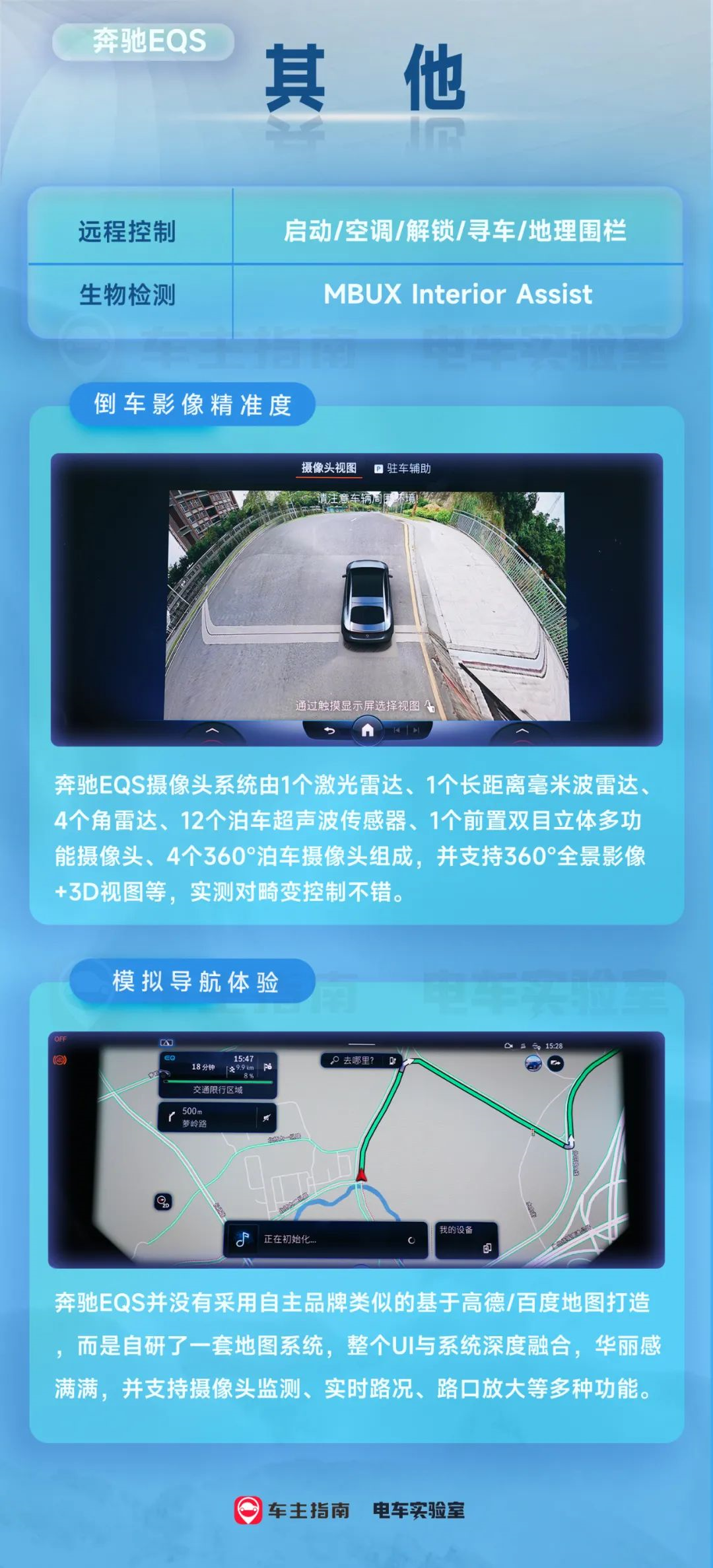
The Mercedes-Benz EQS camera system is at a high level, consisting of 1 laser radar, 1 long-range millimeter-wave radar, 4 corner radars, 12 parking ultrasonic sensors, 1 front dual-functional camera, and 4 360° parking cameras.
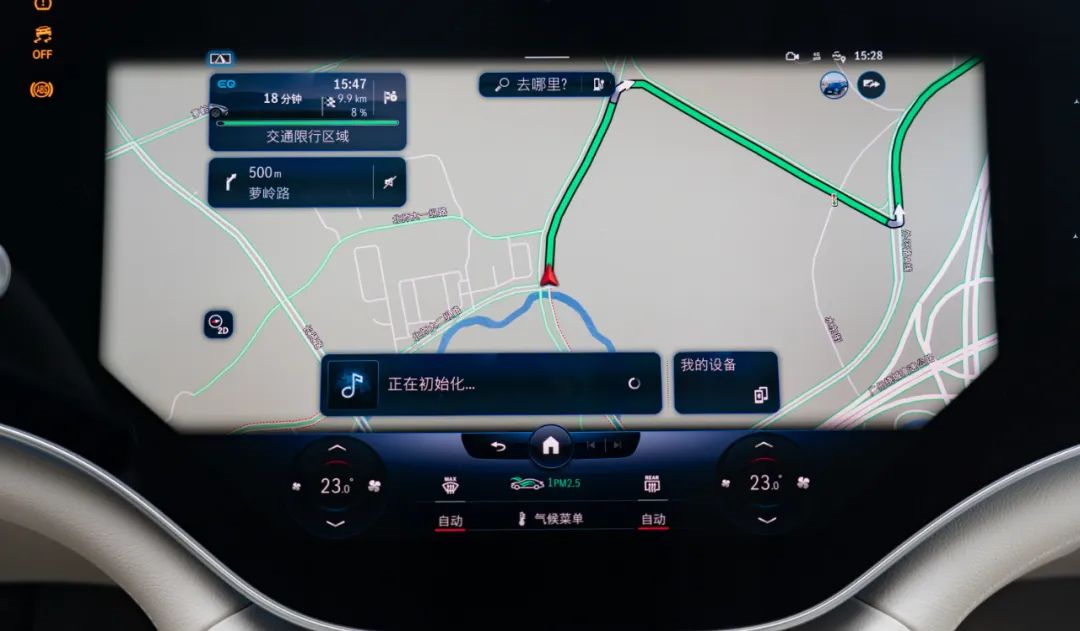
As for the navigation system, the Mercedes-Benz EQS did not adopt a self-built brand similar to that of Gaode/Baidu maps, but self-developed a map system, which deeply integrates the entire UI and system, giving a luxurious feel. Moreover, it has comprehensive functions, in addition to basic navigation and traffic conditions, it also integrates navigation information, charging infrastructure information and battery management system databases. That is, in navigation, it not only considers the factors of its own vehicle, but also integrates road big data. For example, it can make dynamic reactions to whether the road ahead is congested and the cost of using charging piles, intelligently searching for the best route.
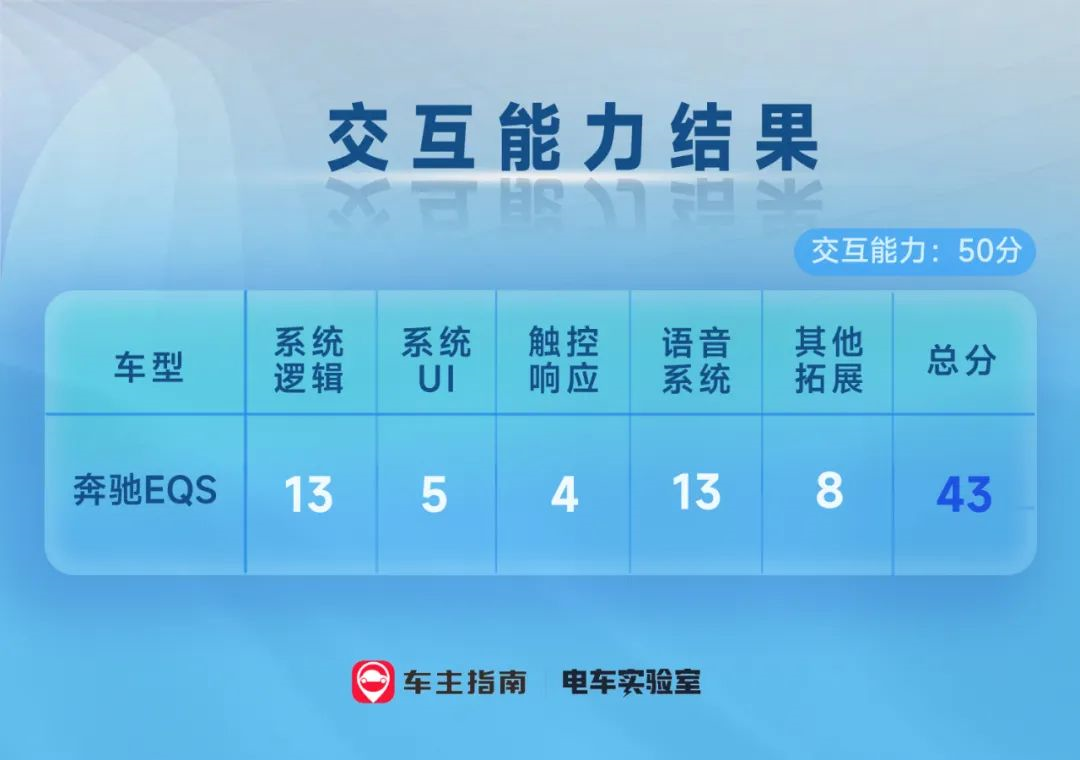
Application Ecology
However, by looking at the essence through the phenomenon, we will find that to achieve a truly intelligent cockpit, we cannot rely solely on the in-car system itself, but need to incorporate a richer application ecology. After all, without a sufficient application ecology, the system itself has little value, which is in line with the current hot IT industry.
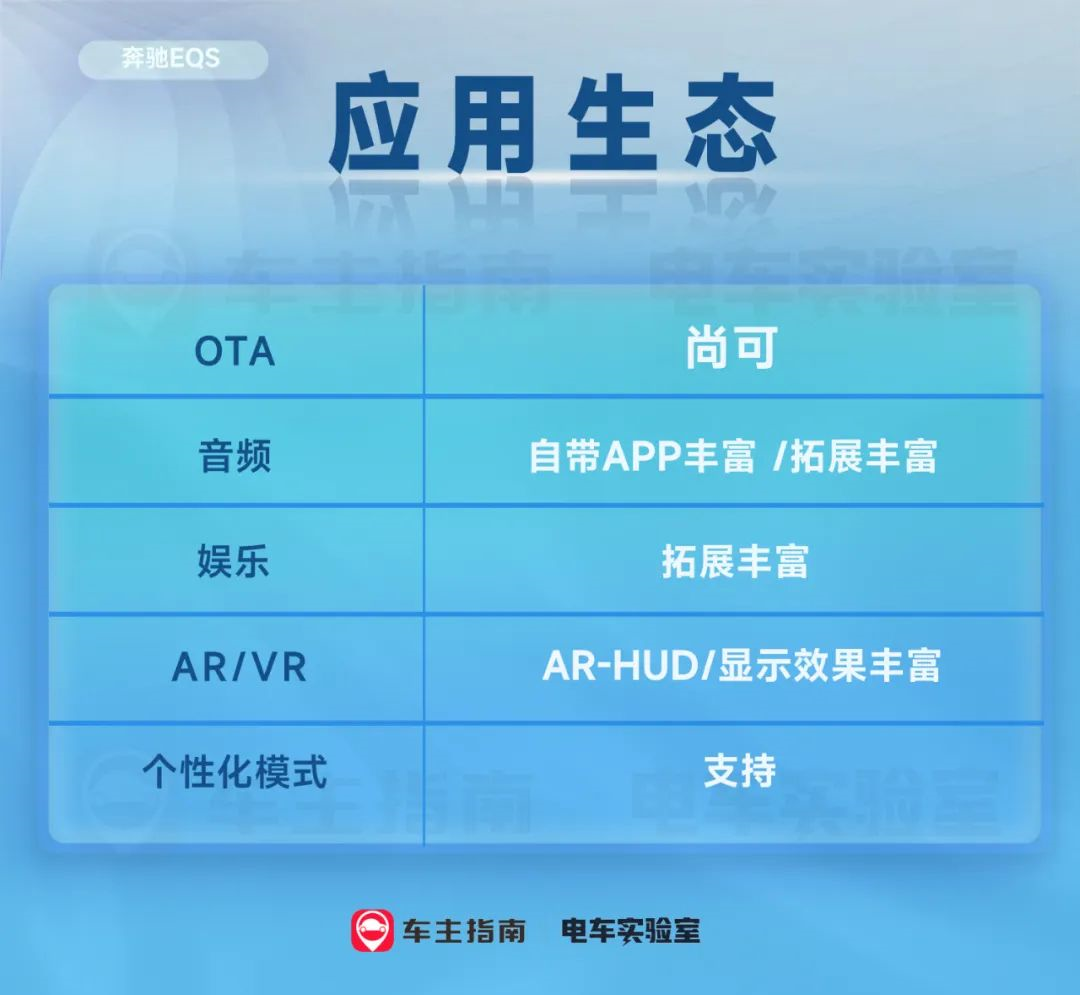 The Mercedes-Benz EQS, as a traditional luxury brand, surprisingly maintains a high degree of openness to third-party apps, providing not only self-contained browsers and other built-in apps, but also a variety of multimedia software such as Bilibili, Tencent Video, Cloud Lis-tening, and Fenghuang FM in its app market.
The Mercedes-Benz EQS, as a traditional luxury brand, surprisingly maintains a high degree of openness to third-party apps, providing not only self-contained browsers and other built-in apps, but also a variety of multimedia software such as Bilibili, Tencent Video, Cloud Lis-tening, and Fenghuang FM in its app market.
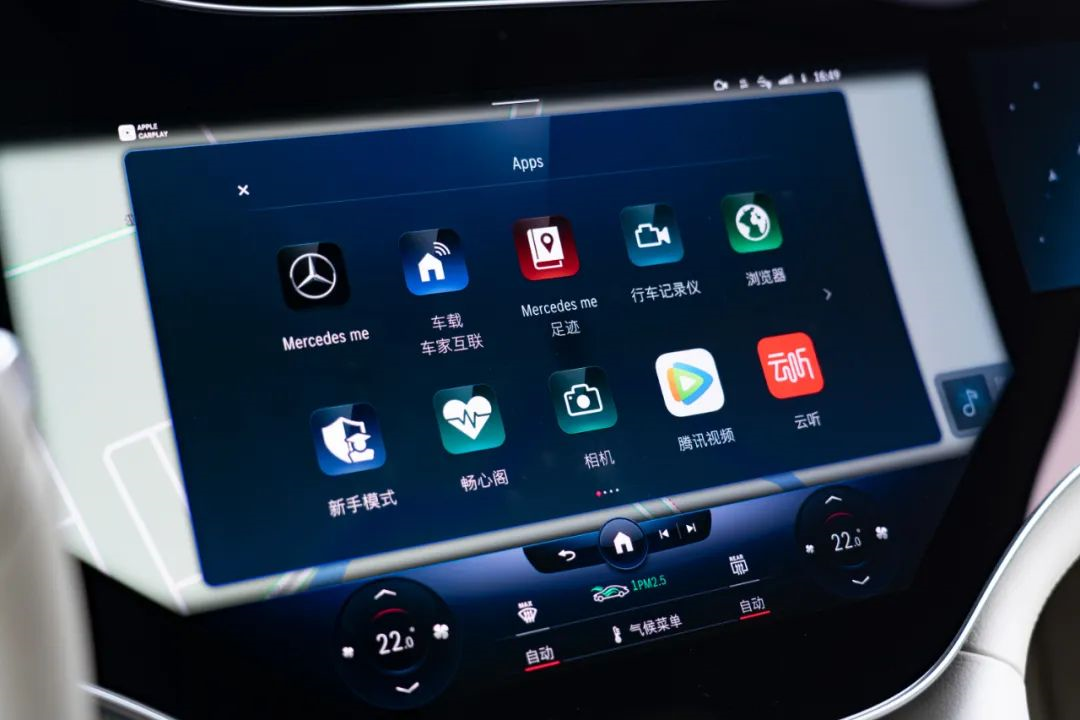
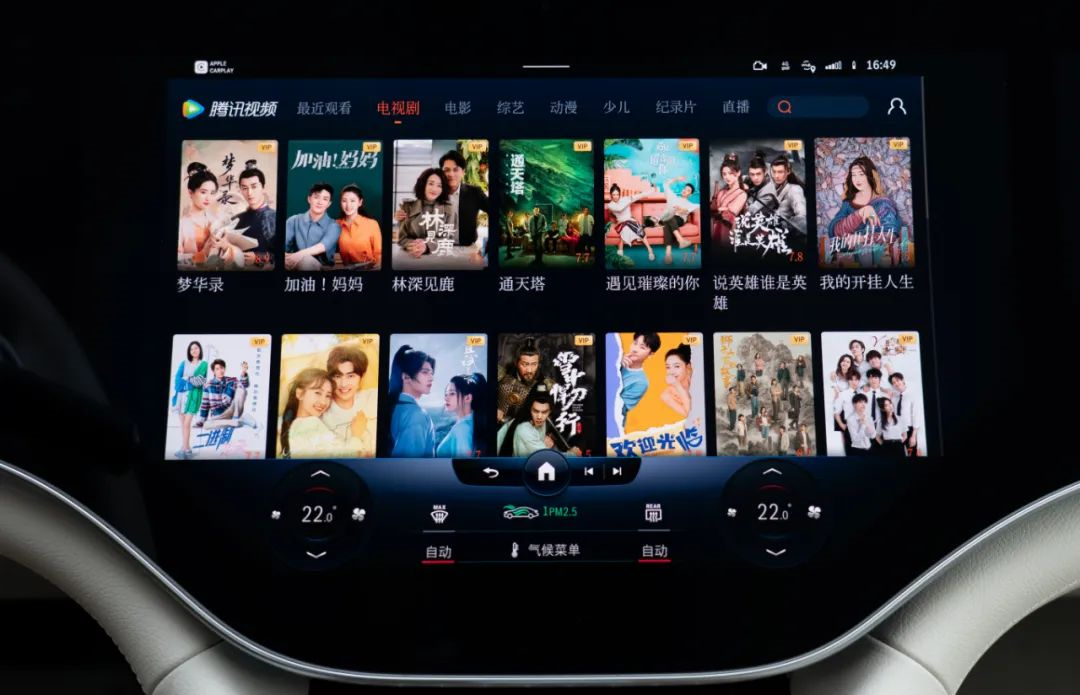
However, third-party app interfaces have not been deeply customized for the EQS UI, especially for video apps like Tencent Video, which does not support full-screen mode, and the bottom status bar always remains visible (which is very eye-catching).
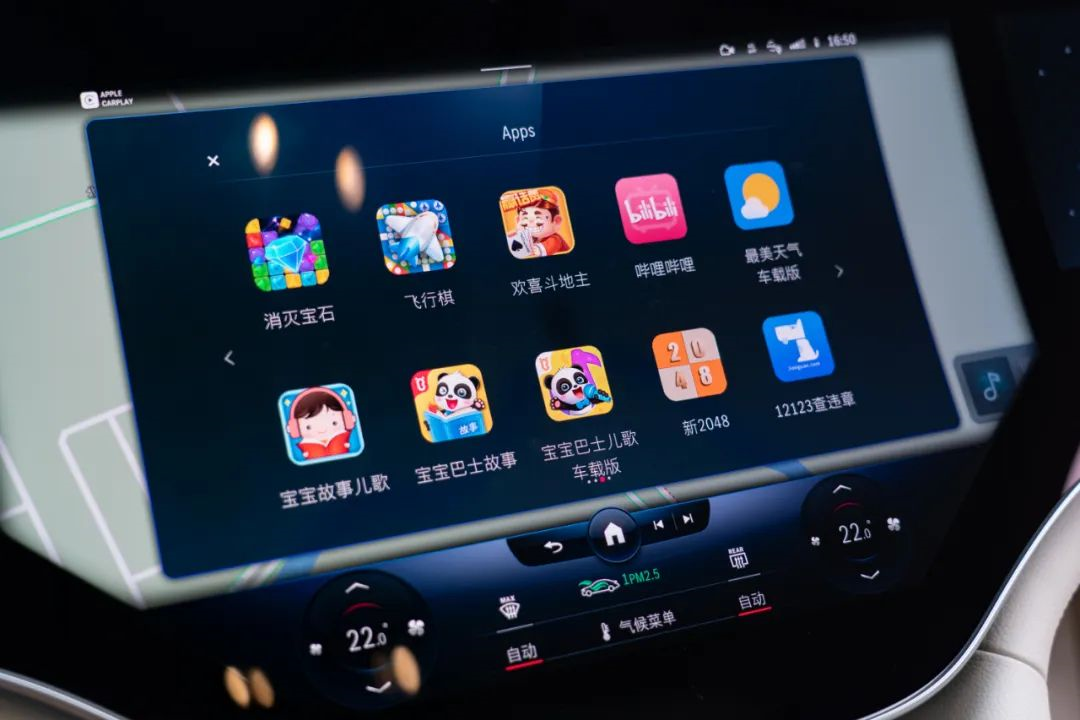
In terms of entertainment functions, the Mercedes-Benz EQS is also impressive, as various practical apps (calendar, flight management, SF Express, Tongcheng, etc.), news apps (Weibo, Tonghuashun, Pengpai News), and various games greatly enhance its practicality and entertainment.
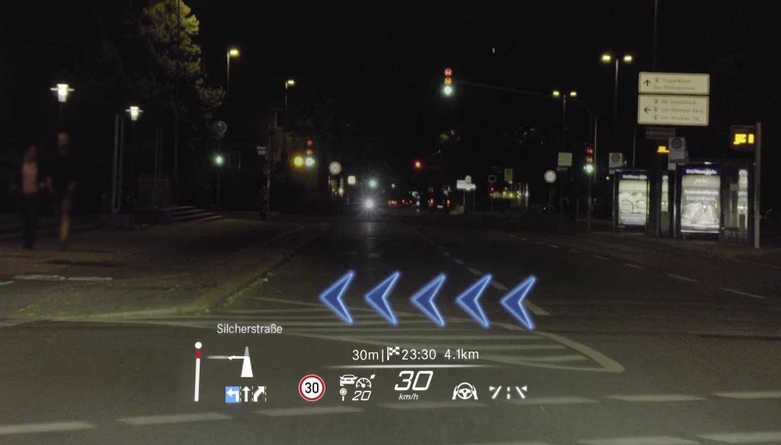
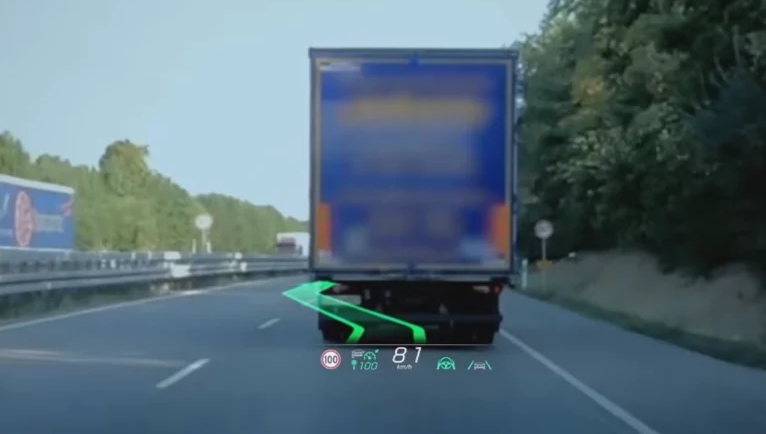
In addition to its innovative onboard screen, the Mercedes-Benz EQS is also equipped with an augmented reality head-up display (AR-HUD) system. It is reported that this HUD display can show auxiliary images up to 10 meters away, in conjunction with driving assistance systems and navigation information, providing a wealth of augmented reality content.
Although this system also supports the display of speed, navigation, and lane-keeping information, similar to most head-up display systems on the market, after activating the Distronic distance assistance function, it can dynamically indicate road conditions in real time. For example, when the vehicle begins to deviate from the lane, the system displays red animation warning lines and indicates the correct driving direction; and in a bend, the system displays dynamic arrows, which change as the distance decreases.
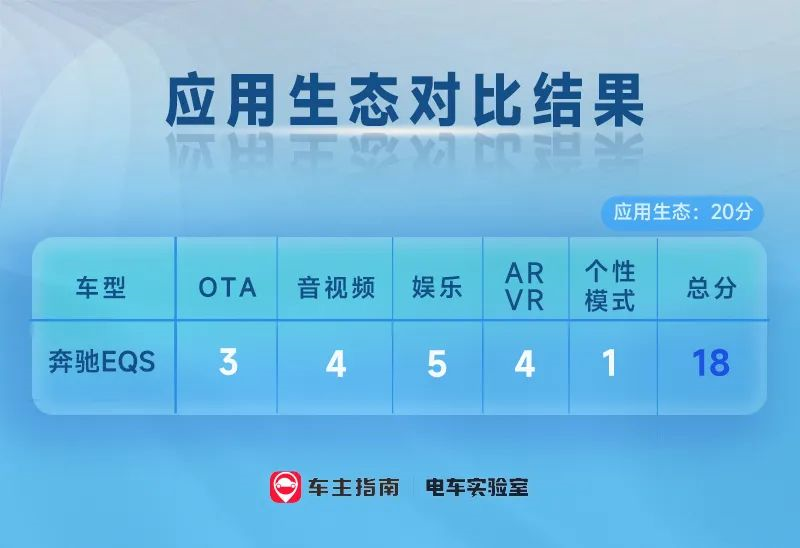
ConclusionAs Mercedes-Benz’s first pure electric flagship sedan and the first model of the EVA pure electric platform, the “gold content” of EQS is immeasurable.
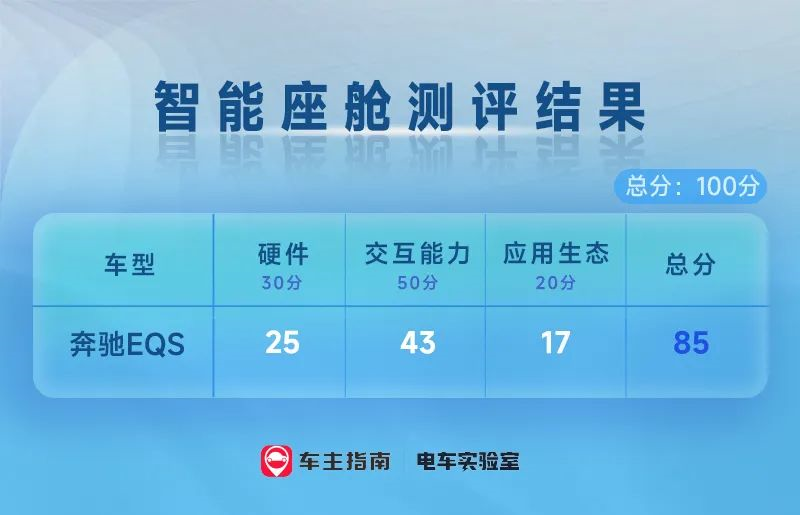
From the results of this evaluation, the intelligent cockpit of the Mercedes-Benz EQS is impressive in terms of hardware, system and application expansion, especially with the stunning screen. It deserves to rank first on the ICBT-100 list with a total score of 85!
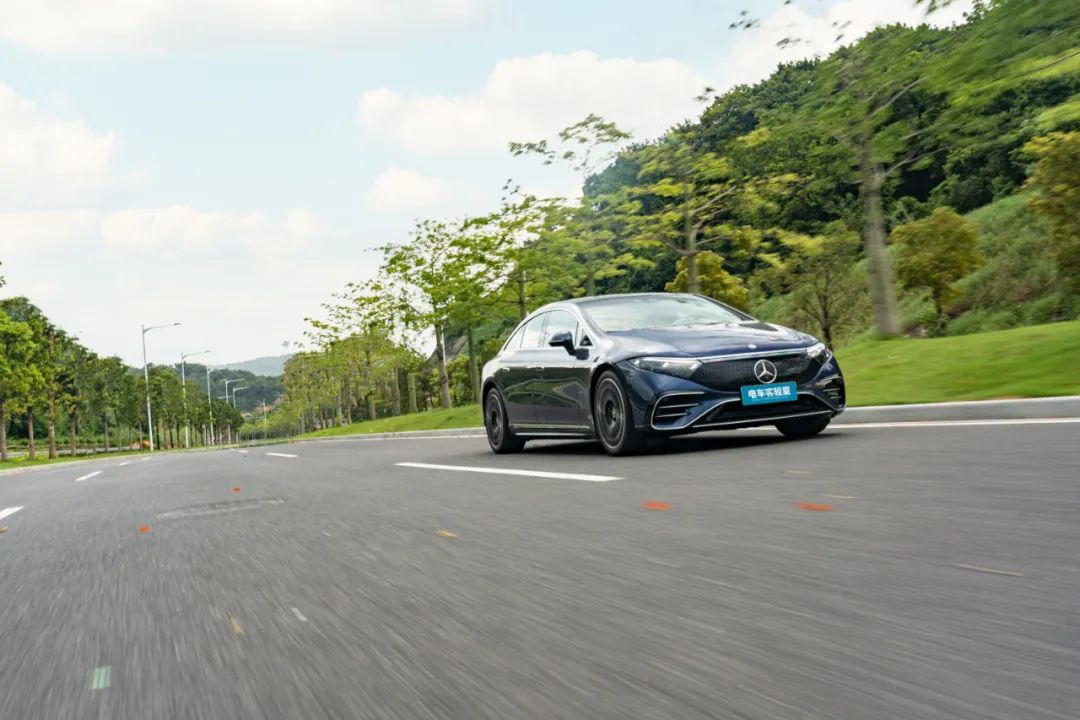
But to be honest, there are still some shortcomings:
- The system has great room for improvement in terms of localized coverage, especially the natural language understanding of Chinese for the voice system.
- It is hoped that the interface optimization for third-party apps can be deeply integrated with the entire system, to ensure a unified interaction.
In the end, as the saying goes:
Mercedes, who invented the car, has once again invented the smart car.
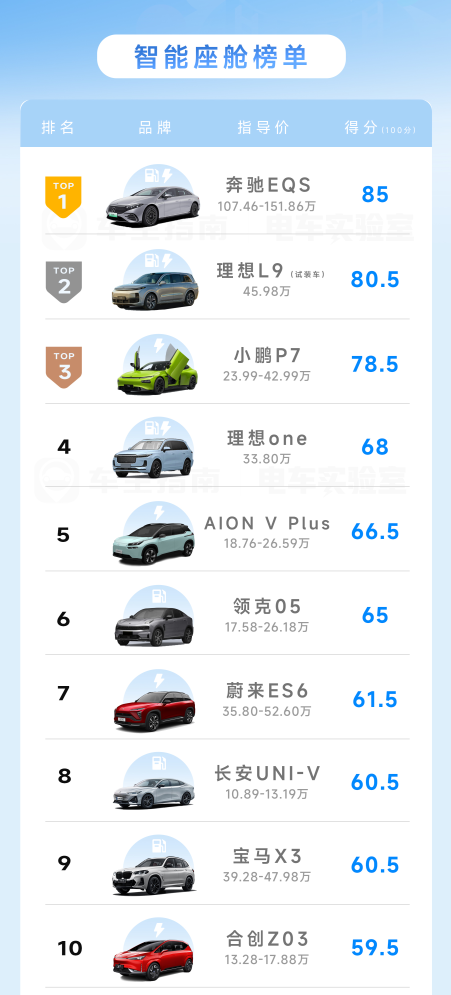
Previous Content: (Click the link below to view)
NIO ES6 / XPeng P7 / Ideal ONE: “Who has the most powerful smart cockpit? ICBT-100 Test” by Xiao Li Wei
Ideal L9: “What level is the car that everyone is hyping on among its peers?“
HeChuang Z03: “No one knows better than me about the first smart cockpit for Generation Z“
Chang’an UNI-V: “Is there any reason left to buy the Civic? Smart cockpit test of Chang’an UNI-V“
Standard Release: “ICBT-100 Standard for Smart Cockpit Evaluation Released | Intelligence + ICBT-100“
This article is a translation by ChatGPT of a Chinese report from 42HOW. If you have any questions about it, please email bd@42how.com.
